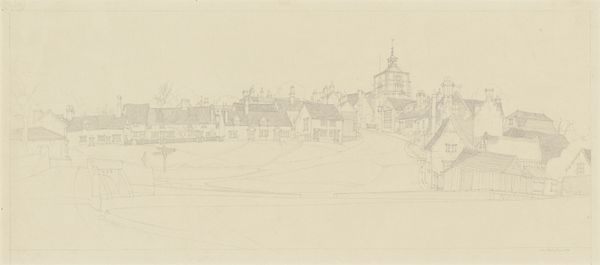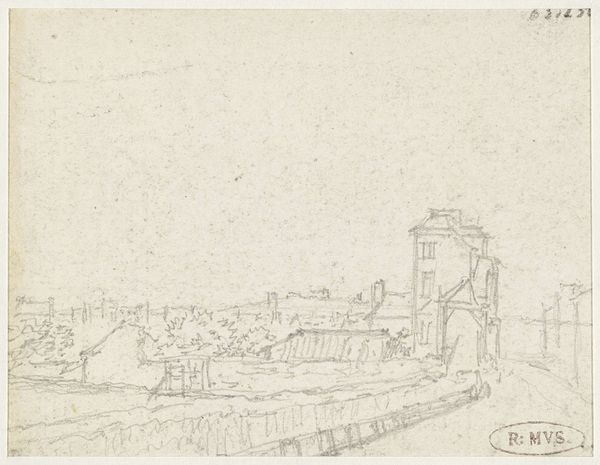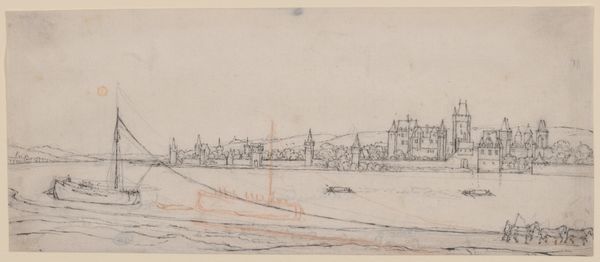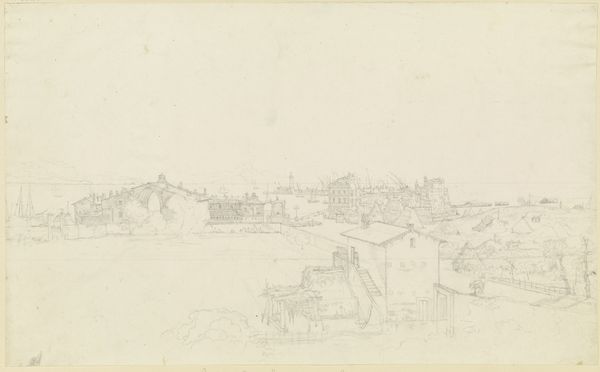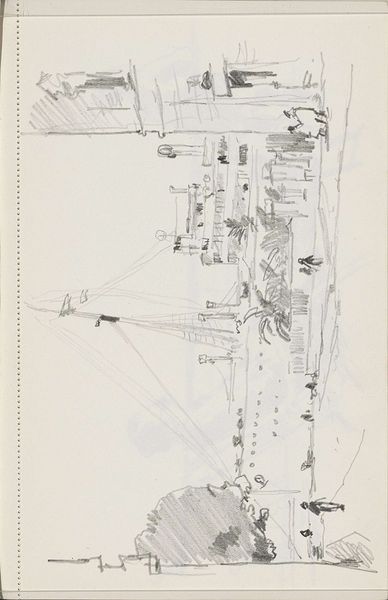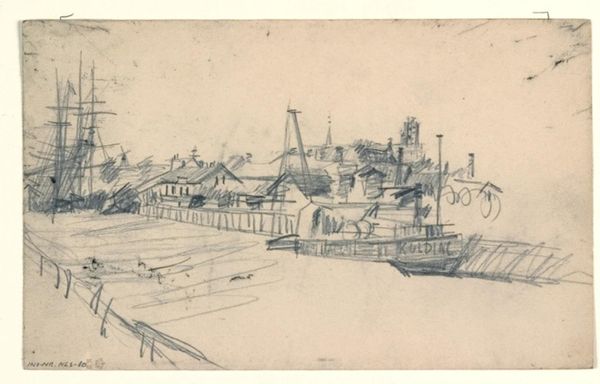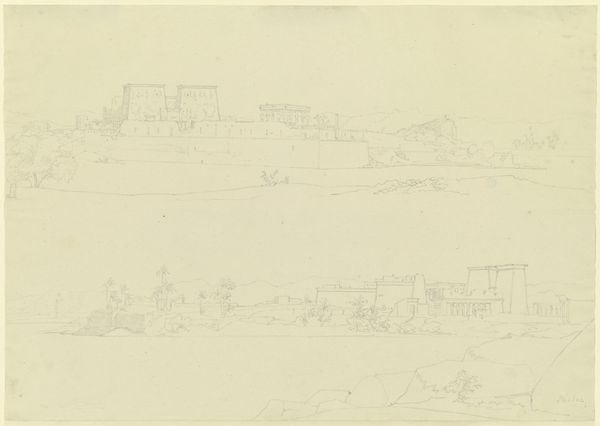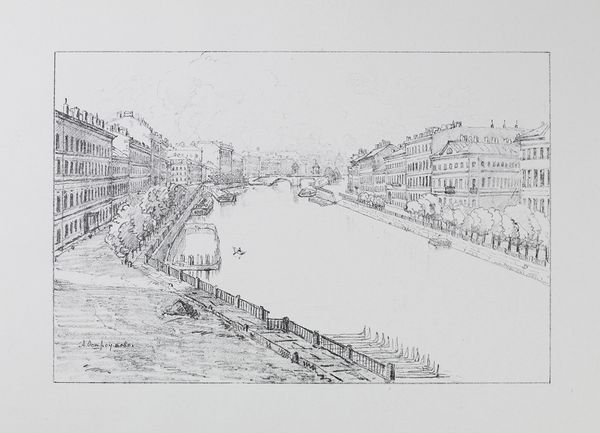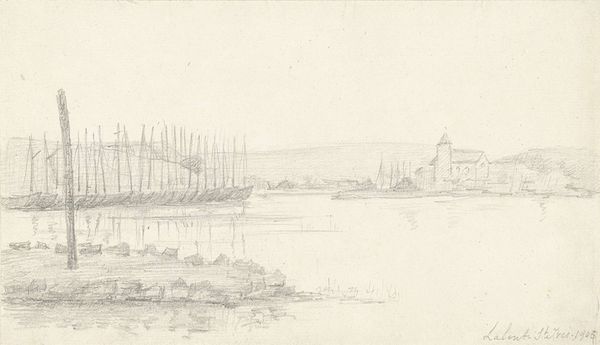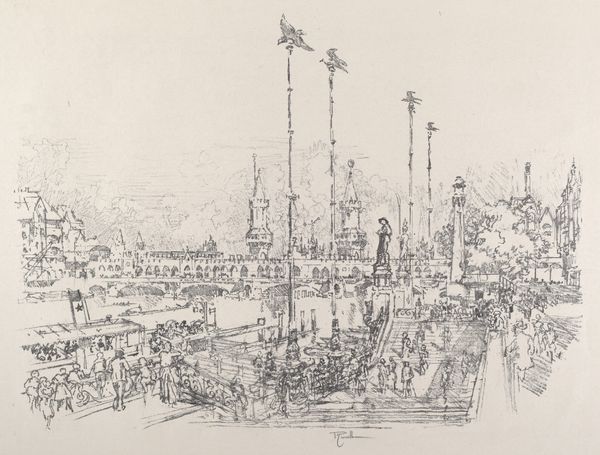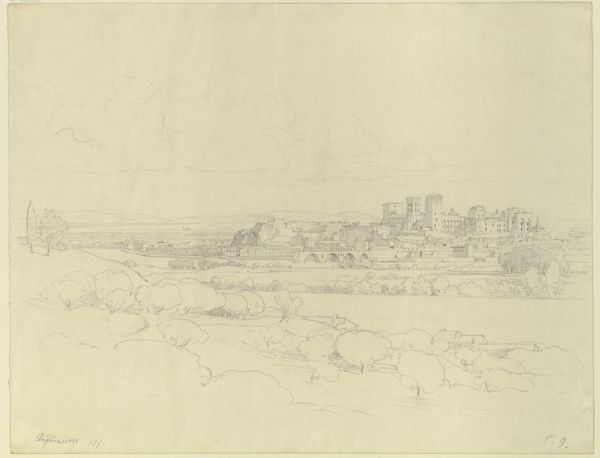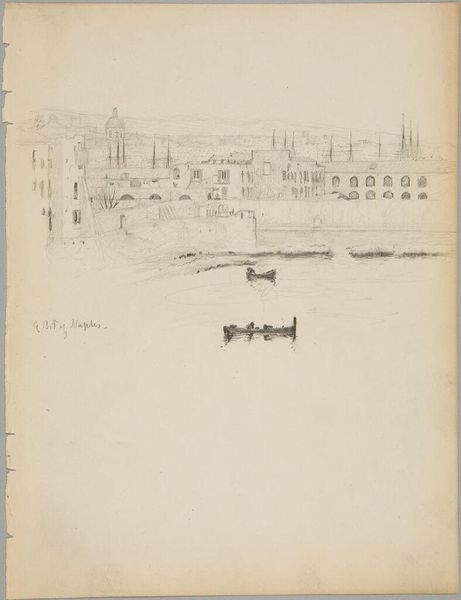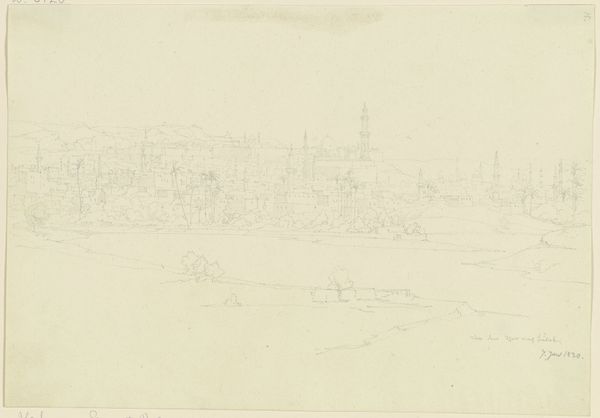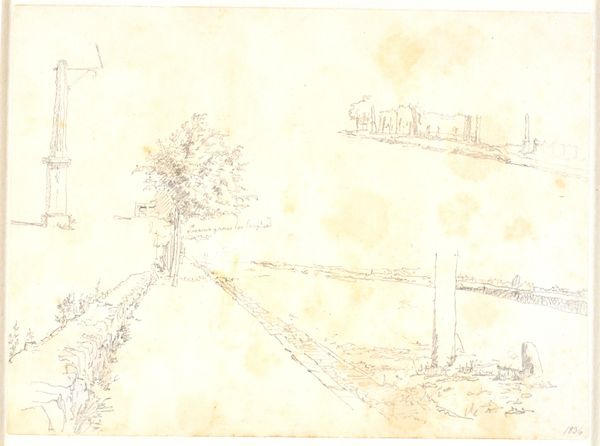
drawing, pencil
#
architectural sketch
#
drawing
#
quirky sketch
#
sketch line
#
landscape
#
idea generation sketch
#
sketchwork
#
dynamic sketch
#
sketch
#
pencil
#
technical sketch
#
architecture drawing
#
cityscape
#
storyboard and sketchbook work
#
realism
#
initial sketch
Dimensions: height 206 mm, width 395 mm
Copyright: Rijks Museum: Open Domain
Editor: This is *Gezicht op een Normandische stad* – or, View of a Norman City – a pencil drawing by Charles Louis Mozin, made sometime between 1816 and 1862. It has a dreamy, ephemeral quality because of the light strokes of the pencil. What do you see in this piece? Curator: I see a visual record imbued with cultural memory. The cityscape itself – consider the imposing architecture, almost skeletal in its rendering – it becomes a symbol of permanence, while the harbor activity, rendered with much more fluidity, speaks of transient human endeavors. Do you sense that contrast? Editor: I do. It's almost like the city is stoic, and the port is where all the human drama unfolds. The light strokes give a sense of constant movement, not a settled narrative, a fleeting moment. Curator: Exactly. The ships, the people… they’re all players on a stage that's much older and grander than themselves. This isn't just a topographical study; it’s about the human relationship with the enduring architectural forms – power, trade, social structures. What sort of stories might it whisper to its contemporary audience? Editor: Probably something about their place in the world, their legacy and future. This is what it felt like to live here. But I never thought a drawing of a city could be so... layered. Curator: That’s the power of visual symbols, to connect us not just to what's depicted but the cultural memory that it activates within us, generation after generation. I think it is beautiful how the artist can share and create these layered emotional contexts with what might seem like an understated cityscape.
Comments
No comments
Be the first to comment and join the conversation on the ultimate creative platform.
